Link: https://drive.google.com/open?id=1EwXfkyi-ZoXZtg6_UaRKJT_4vE0iwg6g
Date: 05.21.2019
Processor: Ann Chen
Partners: Maike Prewett
Description:
The Shanghai Whale Walk is an educational opportunity for participants to better visualize the North Atlantic right whale, its undersea habitat, and the threats it faces, using interactions with the surrounding urban landscape as a measuring tool. It is mapped on Shanghai lujiazui skywalk from Lujiazui Station(exit 1) to Lujiazui Central Green.
It is a demo for the Wildlife Conservation Society, and meant to eventually be adapted to the city of New York and its landmarks.
It runs over thirteen minutes long.
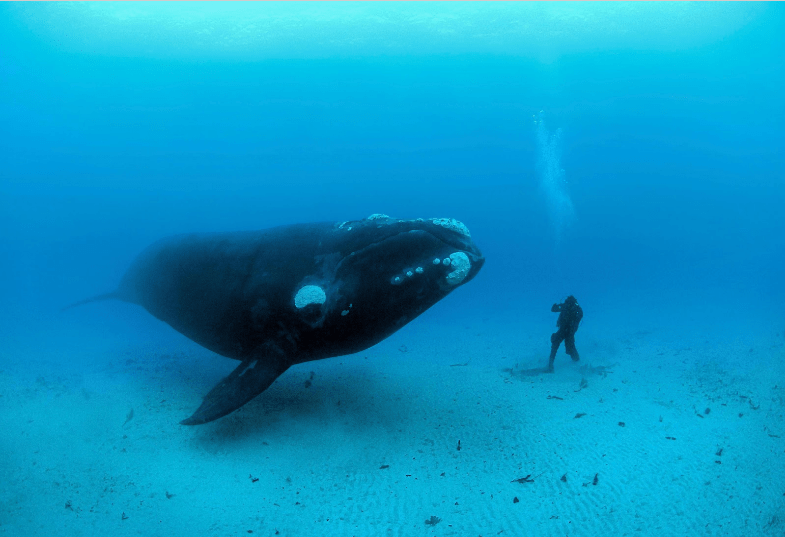
Process:
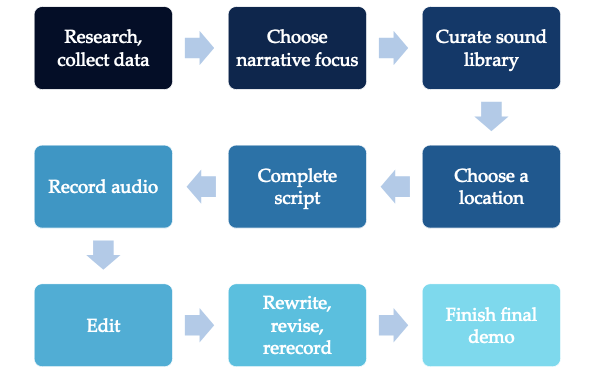
#1 Research:
The idea of the project is to visualize some facts about marine animals in the American coast as a demo for WCS. Ocean seems a far off place as people get more and more used to life in city. We want to start from here and map the related marine information in city block, and by making comparison between “us” and “them”, people can get a clearer idea of those marine animals in danger. Though ideally we should map in the New York City, we really want the class to experience the interactive walk in person. We then decided to map the walk in Shanghai, which also allows for more accurate timing of the project.
We first start from getting together some interesting comparison we found.
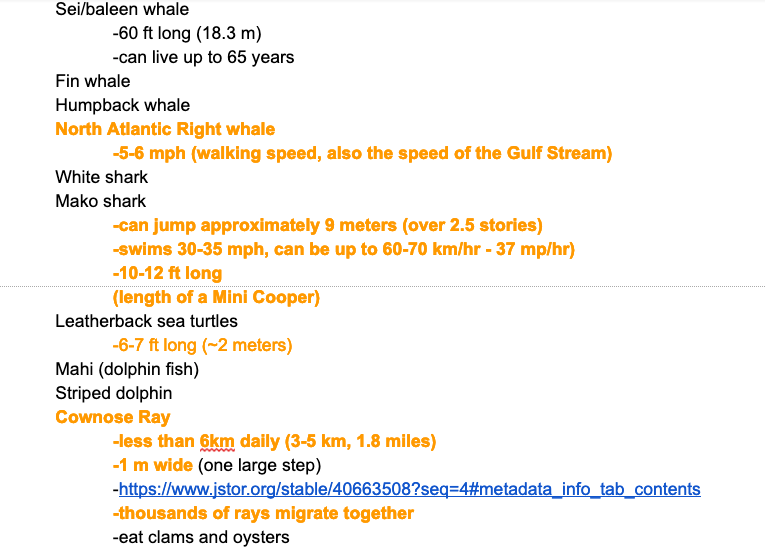
In order to make the project more focused and considering the data we found, we decided to make it a journey with the North Atlantic Right Whale(NARW). Based on that, we drafted out script verson one which only includes the voice over but not sound effects. We then reach out to WCS for more information about NARW.
Additionally, we decided to map the walk on the Lujiazui skywalk not only because it is one of the most busiest place with lots of skycrapers which matches the data we want to visualize(the height of the Jinmao for example), but also because it leads to the Lujiazui Central green, which fits with our idea of reflecting on the nature. Also, the time needed to walk through the skywalk is around 10 minutes, perfect for an interactive walk project.
Janet Cardiff’s interactive walk serves as a great example for us to learn. We listened to the “Her Long Black Hair” and took notes about how she structure the script, how she pace and engage with the audience. Which helps a lot with our Whale Walk.
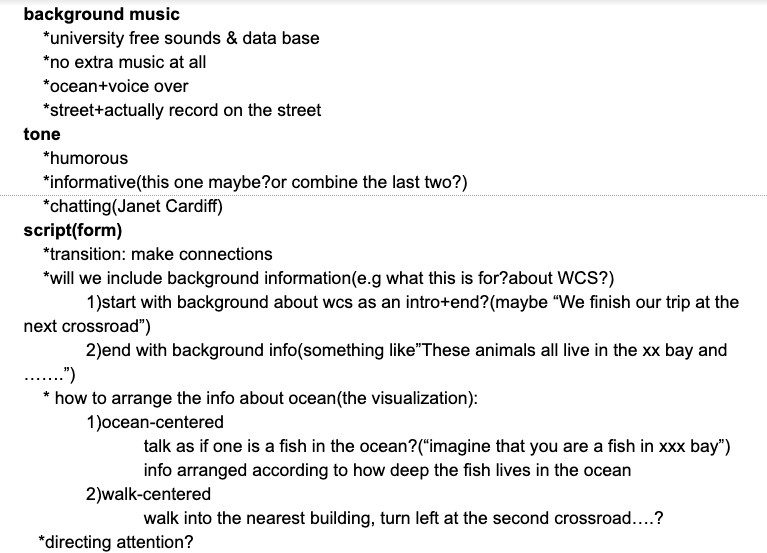
We divided the work after we got the basic idea of how we are going to do the Whale Walk: Maike keeps working on the script and recoding the voice over, and I start to work on the sound effects by building our own ocean sound library.
#2 Reaper tutorial:
As mentioned, I started to work on the sound effects as we slipt up the work. I found it a great opportunity to learn the skill of editing audio. After some tutorial from Ann, I started to learn reaper on Lynda as suggested by Ann. In two weekends, I went throught all the tutorials about editing and mixing.
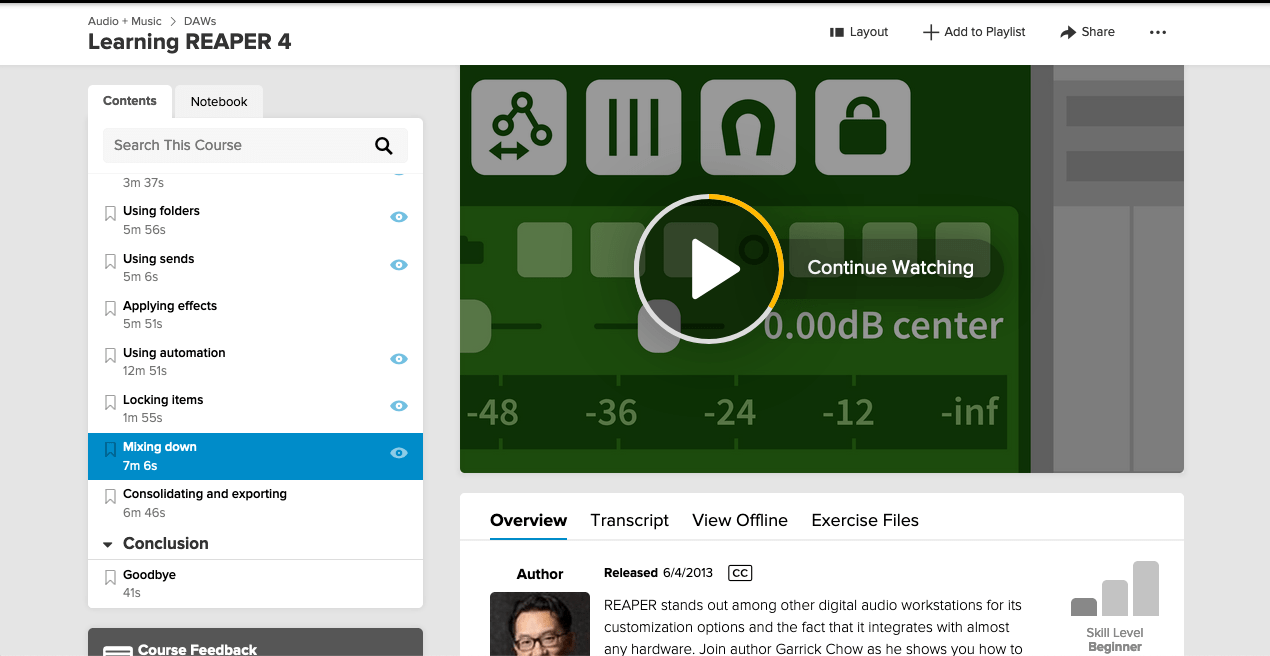
While watching, I worked on the mp3 file in my computer to have the tutorial tested in reaper so that I could remember.
#3 Sound library:
I really started to build the sound library after I finished the reaper tutorials. We built a folder for sound effects we found online and a folder for onsite recording. For the part of ocean, we got lots of voices of NARW as well as sound in the ocean from online sources. For the part on the ground, we went to the Lujiazui skywalk and record while walking to have the realtime onsite recording.
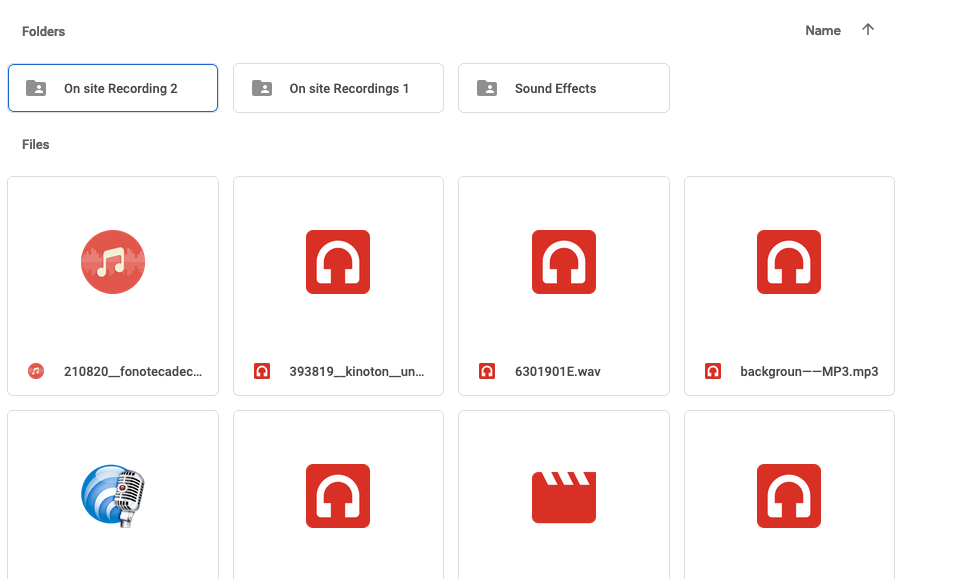
The three main sound scape I built are the ocean, the NARW and the noise in the ocean. I layered and edited them in reaper and got them exported as material to use for later editing.
#4 Editing and revise:
While I was preparing the sound library , Maike got to finished the second draft and have the first record version tested on site. I went the day after as a user to test out the read version to see what works and what doesn’t. I focused on the timing of each section and retime it when it doen’t fit. Some of the instructions are clear but some are not, the central green, for example was not clear enough which later is well adjusted. While walking, I also thought about how I would like to create the experience for other users. The idea of adding NARW’s sounds when users are instructed to look up at the top of the Jinmao came from the walk too. I felt it was a great way to help with audience imagination of NARW diving. I also got some onsite recording too which I then upload to the onsite recording 2.
At this moment, I had been quite comfortable with reaper and got almost all the materials I needed. I then layered them according to the section. Folders are created so that it would be easier for later refining.
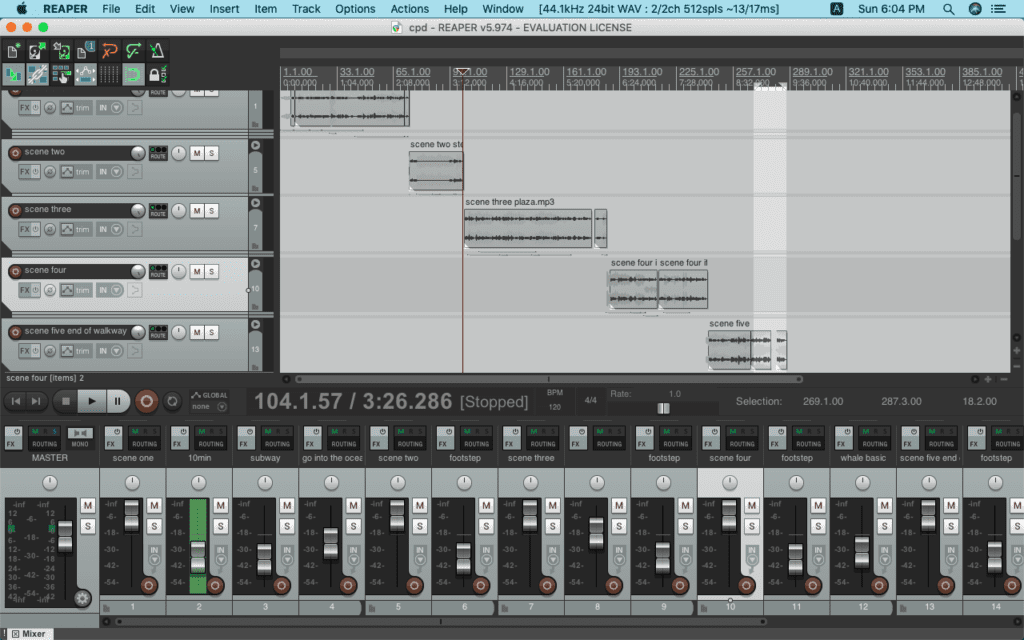
The first version went quite well as a draft. We are really thankful to Ann for her detailed and useful feedbacks. The major problem of it is that there are too many time on the ground which is somehow distracting. Ann suggested to think of the Whale Walk as a journey following the Whale. We restructured the script and add the scene of diving into the ocean and coming out of the ocean. I like the diving scene the best as it really works well with the diving sound, the bubbles going up and water sound which creates the feeling of getting deeper. The NARW upcall follows as a great transition. The trim function of writing volumn according to time in reaper helps a lot while I was editing.
Reflection:
Thanks to all the feedbacks we got that contribute so much to make the Whale Walk the way it is now. Thanks to Maike for helping so much and both her voice and the tone she used sounds really great. Overall, I think the Whale Walk turns out really great. According to the feedbacks we got, people do learn a lot and would love to follow the instructions. There do exist a lot of room for improvement. In some parts, the sound of the ocean is too loud for audience to hear Maike clearly. We also got a feekback saying that one of the instruction telling people to close one’s eyes in the crowd however does not seems comfortable to her. Additionally, we are suggested that the Whale Walk could potentially be a serious of sound walks. We could have sections of climbing up a building, walking in the park and etc for people to choose.
As for myself, the most obvious takeaway is my skills of editing audio in reaper which I have long been longing to learn yet never got the chance to do so. What’s more important for me is to build a project that based on real life and research. Projects I have done before are based mostly on my own experience and feelings. It is actually the first time that I developed a project for the Wildlife Conservation Society, the WCS group. The process of developing is rewarding because I know for sure that I am making something meaningful. During the research, I have learned a lot about the endangered whale and its life undersea. It is a pleasure I could do something for them. The collaboration with Maike was so great, we have clear division of labour and communicate and help each other a lot. We are each other’s first user.
Sources:
Title photograph by Brain Skerry.
“The Changing Voices of North Atlantic Right Whales”, NOAA Fisheries. March 9, 2018.
Hain JHW, Hampp JD, McKenney SA, Albert JA, Kenney RD (2013) “Swim Speed, Behavior, and Movement of North Atlantic Right Whales (Eubalaena glacialis) in Coastal Waters of Northeastern Florida, USA.” PLOS ONE 8(1): e54340. https://doi.org/10.1371/journal.pone.0054340
Moore, Michael. [TEDx Talks] “A Fix for the Imperiled North Atlantic Right Whale”. August 17, 2018. Youtube.
“North Atlantic Right Whale”, Smithsonian, April 2018.
“North Atlantic Right Whale”, World Wildlife Fund.
Parks, Susan E., “Acoustic communication in the North Atlantic right whale
(Eubalaena glacialis)”, 2003-09, DOI:10.1575/1912/2453,
Szabo, Dr. Vicki Ellen. “Species Stories: North Atlantic Right Whales from their Medieval Past to their Endangered Present”, Historical Climatology. March 21, 2018.
New England Aquarium Special Section, Digital North Atlantic Right Whale Catalog.
NOAA Fisheries Service, Interactive North Atlantic Right Whale Sightings Map.
North Atlantic Right Whale Consortium, Photo-Identification.
Ocean Conservation Research, Sound Library.
University of Rhode Island and Inner Space Center, Discovery of Sound in the Sea, North Atlantic
Voices in the Sea, The North Atlantic Right Whale.